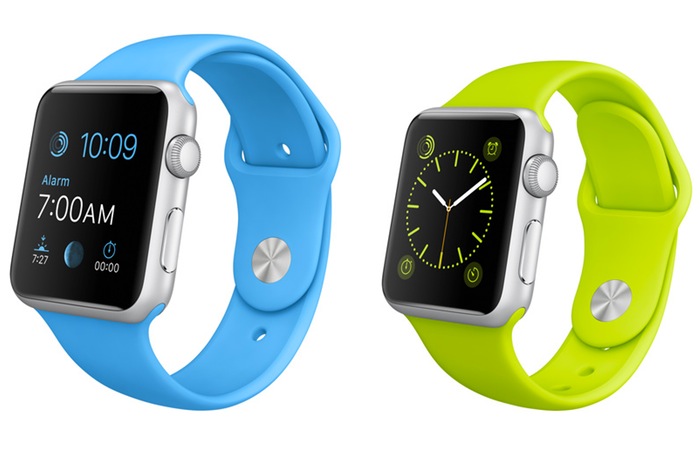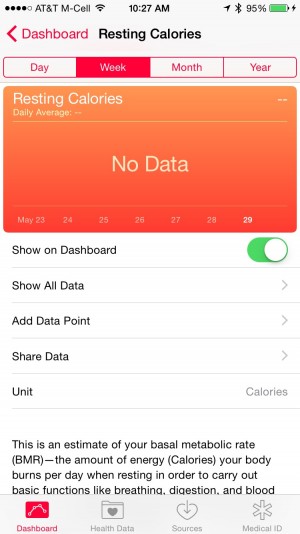Welcome to week three of our Apple Watch review series. If this is the first entry you’ve stumbled across, be sure to check out week one which is filled with initial impressions, and week two which focuses quite a bit on the activity tracking of the device. Once again with no significant Apple Watch game releases aside from a Runeblade update, we’re in another odd spot. But, hey, whatever, Apple is teasing a full Watch Kit SDK which will be previewed at WWDC, so it’s possible that some really cool Apple Watch stuff is on the horizon.

As mentioned last week, currently the most useful non-notification related thing the Apple Watch does is activity tracking. This week, I’ve tried to take this a bit further by figuring out how much more I can integrate Apple Watch activity tracking into my life. I always imagine these kind of fitness stat tracking things as min/maxing your body. The Apple Watch actually serves as a really great key to tying this all together, or at least, it does on paper. When you’re using fitness tracking apps like My Fitness Pal or Lose It! you’re typically tightly tracking your food intake while just making a wild guess at your daily calorie expenditure. You figure out your resting basal metabolic rate by using the following formula:
Men: BMR = 10 * weight(kg) + 6.25 * height(cm) – 5 * age(y) + 5
Women: BMR = 10 * weight(kg) + 6.25 * height(cm) – 5 * age(y) – 161
For me, that results in a resting metabolic rate of 1,746 calories a day. Typically from there you figure out what kind of lifestyle you have, and add another 300 calories or so on top just to account for walking around (or more if you’re a more active person). According to the Apple Watch, I’m averaging almost exactly 2,450 resting calories a day with another 550ish active calories a day for a net caloric expenditure of right around 3,000 calories. These figures are far more than I’ve ever estimated previously. The best way to figure out your actual resting metabolic rate is by an indirect calorimeter which is an expensive piece of medical/sports gear which straps to your face and measures the oxygen your body consumes. If you remember the videos shown during the Apple Watch keynote, this is the mask the people were wearing in Apple’s ultra-secret Sports Lab. These findings were likely looped into the logic the Apple Watch uses, generating caloric burn by sampling your actual heart rate.
I figured I’d try to verify this by tracking everything I do and eat to see if the math all adds up, as it really doesn’t make sense to have a daily discrepancy of nearly 1,000 calories. That’s a big difference, as if the formulas are right but you’re eating based on the Apple Watch calories you could potentially be overeating to the tune of gaining a pound every 3.5 days. That requires some additional investigation.
 Aaaand… that’s where things got weird. Like seemingly everything to do with the Apple Watch, things don’t work in practice anywhere near as well as they do on paper. The dream Apple is trying to sell on the Apple Watch and HealthKit is this highly integrated solution that tracks all your health data, keeps it in one place, and allows other apps to interact with said data. Unfortunately, while I’m sure we’ll get there some day, we’re just not there yet. My Fitness Pal seems to have the best integration, but it still can’t provide a complete picture because of HealthKit weirdness. Your resting calories don’t seem to be reported from the Apple Watch to HealthKit, even though there definitely is a field for it in the Health app. Additionally, none of the fitness apps I’ve found are doing anything with the Apple Watch active calories, which as far as I can tell from scouring the My Fitness Pal knowledge base and forums is because the figures the Apple Watch supports are real high and no one really knows how to reconcile that, so they’re being actively disregarded. Additionally, My Fitness Pal and the other apps I’ve tried which are not the default Apple Activity app are counting steps based on the iPhone M7 motion sensor and not the Apple Watch. Weird again, as this is definitely being reported via HealthKit to the Health app.
Aaaand… that’s where things got weird. Like seemingly everything to do with the Apple Watch, things don’t work in practice anywhere near as well as they do on paper. The dream Apple is trying to sell on the Apple Watch and HealthKit is this highly integrated solution that tracks all your health data, keeps it in one place, and allows other apps to interact with said data. Unfortunately, while I’m sure we’ll get there some day, we’re just not there yet. My Fitness Pal seems to have the best integration, but it still can’t provide a complete picture because of HealthKit weirdness. Your resting calories don’t seem to be reported from the Apple Watch to HealthKit, even though there definitely is a field for it in the Health app. Additionally, none of the fitness apps I’ve found are doing anything with the Apple Watch active calories, which as far as I can tell from scouring the My Fitness Pal knowledge base and forums is because the figures the Apple Watch supports are real high and no one really knows how to reconcile that, so they’re being actively disregarded. Additionally, My Fitness Pal and the other apps I’ve tried which are not the default Apple Activity app are counting steps based on the iPhone M7 motion sensor and not the Apple Watch. Weird again, as this is definitely being reported via HealthKit to the Health app.
Oh, and another fun thing I’ve discovered while trying to fiddle with all this- I’ve got a Fitbit Aria scale, and Fitbit’s stuff doesn’t sync at all to HealthKit. They’ve gone so long without supporting HealthKit that third party developers are actually selling apps like Sync Solver which seriously does nothing but use the Fitbit API to pull your weight data, then dump it into HealthKit. You could make a bunch of equally valid arguments as to whose fault all this lack of integration is, but at the end of the day whose fault it is is sort of irrelevant as it just really sucks for the end user- Particularly as when you’re involved in the Apple ecosystem things Just Work and there rarely is a second step you can take to fix them when it doesn’t. All this HealthKit weirdness feels a lot like iCloud craziness when things just don’t sync, save files get eaten, and all sorts of other weird things- Often leaving you with nothing more than a, “Well, that sucks."
I’m sure this will all get worked out over the next few months, particularly once iOS developers get access to the Apple Watch sensors with the new Apple Watch app SDK, but right now it’s really going above and beyond when it comes to feeling like a very, very Rev. A platform. But, hey, whatever. It’s starting to feel like the sole killer use for the Apple Watch right now is piping notifications to your wrist.
 In a previous life, I worked in enterprise IT and in the pursuit of five nine’s I was basically always on call. I got real used to always having my phone in my pocket basically any time I’m not sleeping or bathing. That habit has persisted through every phone I’ve had since, and my jeans (no joke) have an iPhone pattern worn into them. I noticed a few days ago that I’m inadvertently just leaving my phone on the charger, as all the stuff I need to know just goes to the Apple Watch. I never really hit this level with the Pebble, as the connection to my phone was always so incredibly flaky that I never felt like I could trust it. The Apple Watch, however, is super solid when it comes to staying linked up to my phone. The range is surprisingly good too, as I can just have my phone sitting on the counter inside and still get all my alerts on my wrist fiddling around in my yard.
In a previous life, I worked in enterprise IT and in the pursuit of five nine’s I was basically always on call. I got real used to always having my phone in my pocket basically any time I’m not sleeping or bathing. That habit has persisted through every phone I’ve had since, and my jeans (no joke) have an iPhone pattern worn into them. I noticed a few days ago that I’m inadvertently just leaving my phone on the charger, as all the stuff I need to know just goes to the Apple Watch. I never really hit this level with the Pebble, as the connection to my phone was always so incredibly flaky that I never felt like I could trust it. The Apple Watch, however, is super solid when it comes to staying linked up to my phone. The range is surprisingly good too, as I can just have my phone sitting on the counter inside and still get all my alerts on my wrist fiddling around in my yard.
I keep telling myself cool things are going to come in the future with updates, but three weeks in the Apple Watch still feels like a hard pill to swallow. The sole killer use so far is getting alerts, and it’s real hard to say if that’s worth $349 to … whatever the most expensive Apple Watch Edition is. It continues to feel incredibly reminiscent of the original iPad, where it’s not hard to think of amazing things you could potentially do with the iPad some day. I think the reason it’s so much more bothersome waiting for that some day with the Apple Watch is that it’s strapped to your wrist, in your field of view, all day long as opposed to my iPad which just lived on my coffee table.